Embracing the Himalayas: Unforgettable Trekking in Nepal
With a wide range of trekking routes and the allure of conquering the world's highest peaks, Nepal continues to be a popular destination for adventure enthusiasts.
With a wide range of trekking routes and the allure of conquering the world's highest peaks, Nepal continues to be a popular destination for adventure enthusiasts.
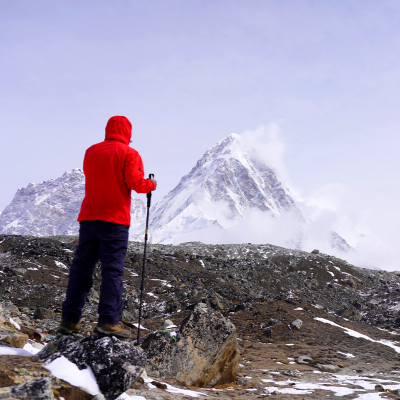
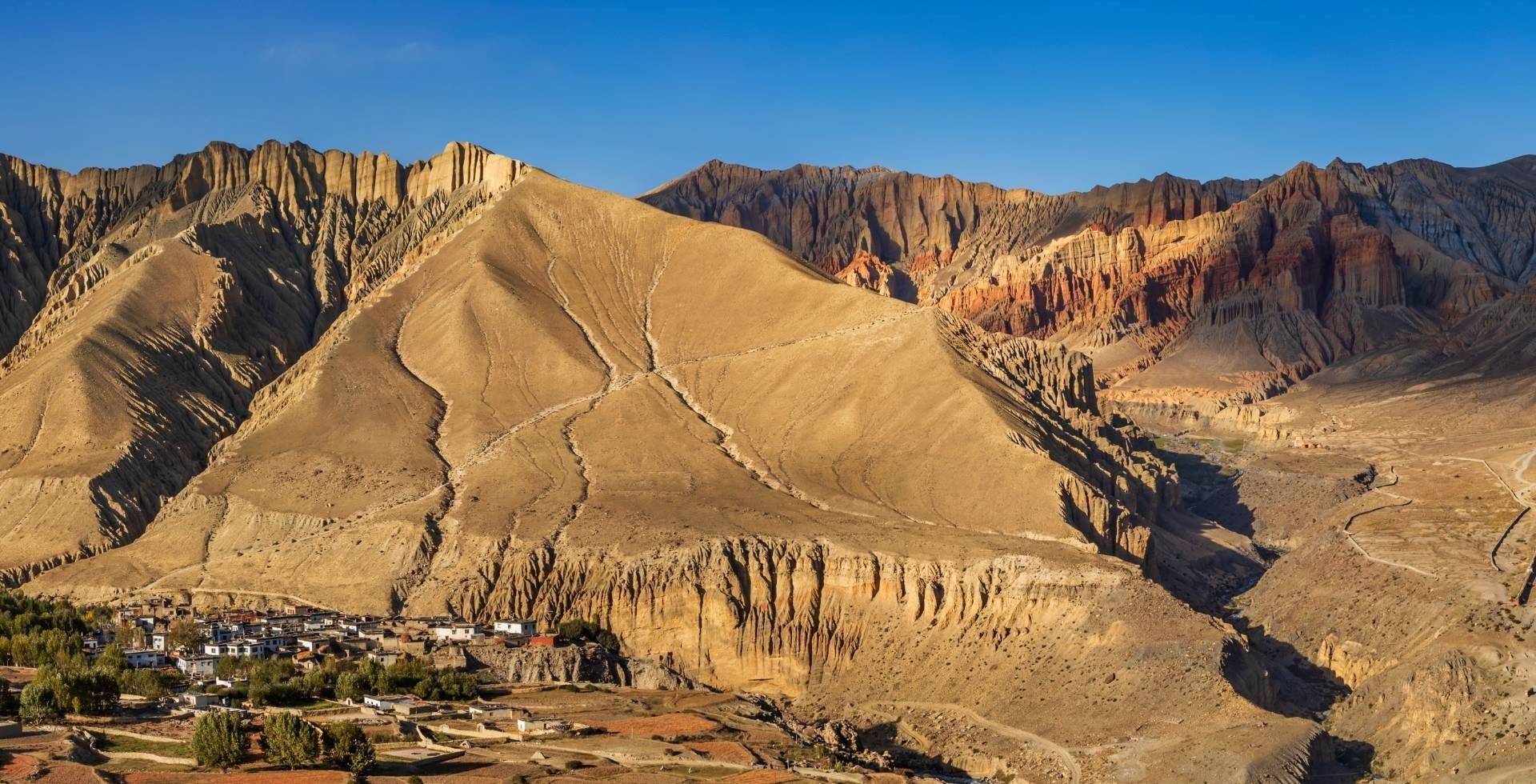
Nepal, a small landlocked country nestled between India and China, is a true paradise for trekking enthusiasts. Known for its stunning landscapes, diverse culture, and warm hospitality, the country offers an unparalleled trekking experience. With the majestic Himalayas, including Mount Everest (the highest peak in the world), as its backdrop, trekking in Nepal is a must-do for adventure seekers.
The diverse topography of Nepal offers a wide range of trekking options, catering to different levels of experience and interests. From short and easy treks through lush forests, terraced fields, and picturesque villages to challenging high-altitude expeditions, Nepal has something for everyone.
Trekking in Nepal is not only about conquering towering peaks but also immersing oneself in the rich cultural tapestry of the local communities. The country is home to more than 100 ethnic groups, each with its own unique customs, traditions, and languages. Trekking through remote villages offers a rare glimpse into the traditional way of life and a chance to interact with the warm and welcoming Nepalese people.
Another significant aspect of trekking in Nepal is the abundance of natural beauty. With over ten national parks, three wildlife reserves, and several conservation areas, the country is a haven for flora and fauna. Trekkers can enjoy the sight of rhododendron forests, alpine meadows, and wildlife such as snow leopards, red pandas, and Himalayan tahr.
The trekking industry in Nepal is a major contributor to the country's economy, employing thousands of people and supporting local communities. The government and various organizations have been working together to promote sustainable and responsible trekking practices to preserve the natural and cultural heritage of the country.
Trekking in Nepal offers a unique combination of stunning landscapes, rich culture, and unforgettable experiences. It caters to various preferences and skill levels, making it a sought-after destination for trekkers from around the world.
Trekking plays a vital role in Nepalese tourism for several reasons:
Economic contribution: Trekking is one of the primary sources of foreign revenue for Nepal. It attracts thousands of tourists each year, contributing significantly to the country's economy. The trekking industry creates employment opportunities for local people, including guides, porters, teahouse owners, and other support staff. The income generated from trekking helps improve the living standards of people living in remote and mountainous regions.
Promotion of cultural exchange: Trekking in Nepal offers tourists the opportunity to immerse themselves in the rich and diverse culture of the country. As trekkers pass through remote villages, they get to interact with the local people and learn about their customs, traditions, and lifestyles. This cultural exchange not only enhances the trekking experience for tourists but also helps preserve and promote the unique heritage of Nepal.
Conservation and sustainable development: The trekking industry has led to increased awareness of the importance of environmental conservation and sustainable development in Nepal. A portion of the trekking permit fees is used to support the conservation of national parks, wildlife reserves, and other protected areas. Additionally, many trekking companies and organizations promote responsible tourism practices, such as minimizing waste, conserving energy, and supporting local communities.
Infrastructure development: The popularity of trekking in Nepal has led to improvements in infrastructure and facilities in remote areas. The construction of trekking routes, suspension bridges, and teahouses has made trekking more accessible for tourists and has benefited local communities by providing better access to essential services and resources.
Adventure tourism: Nepal is known for its adventure tourism, and trekking is one of the main attractions in this sector. With a wide range of trekking routes and the allure of conquering the world's highest peaks, Nepal continues to be a popular destination for adventure enthusiasts. The success of the trekking industry has also paved the way for the growth of other adventure sports and activities in the country, such as mountaineering, white-water rafting, and paragliding.
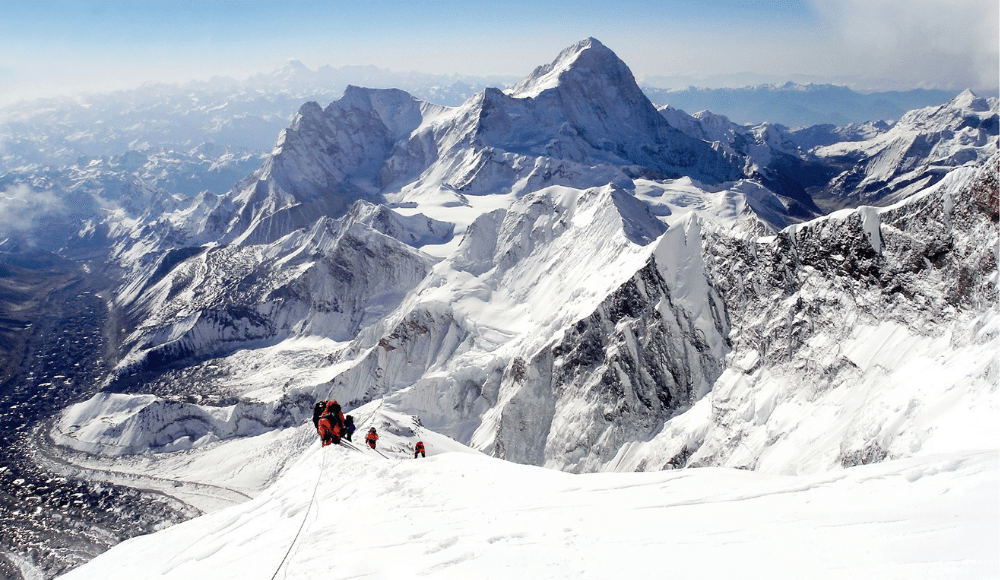
Trekking is of paramount importance to Nepalese tourism, as it contributes significantly to the country's economy, promotes cultural exchange, supports conservation efforts, drives infrastructure development, and boosts the adventure tourism sector.
Nepal is home to several major trekking regions, each offering unique landscapes, cultural experiences, and trekking trails. Here is an overview of the major trekking regions in Nepal:
Everest Region:
Also known as the Khumbu region, this is the most famous trekking region in Nepal, as it is home to Mount Everest, the world's highest peak. Trekkers from all over the world come here to experience the awe-inspiring beauty of the Himalayas. Popular treks in this region include Everest Base Camp Trek, Gokyo Lakes Trek, and the challenging Three Passes Trek.
Annapurna Region:
The Annapurna region is another popular trekking destination, known for its diverse landscapes, ranging from subtropical valleys to high-altitude deserts. This region offers a mix of short and easy treks, as well as longer and more challenging expeditions. Some of the most famous treks in this region are Annapurna Base Camp Trek, Annapurna Circuit Trek, and Ghorepani Poon Hill Trek.
Langtang Region:
Situated to the north of Kathmandu, the Langtang region is easily accessible and offers relatively shorter and less crowded treks. The region is known for its lush forests, alpine meadows, and stunning mountain vistas. Popular treks in this region include Langtang Valley Trek and Gosaikunda Trek.
Manaslu Region:
The Manaslu region, named after the eighth highest peak in the world, Manaslu, is gaining popularity as a trekking destination for its remote trails and unspoiled beauty. The Manaslu Circuit Trek is the most popular trek in this region, offering a challenging yet rewarding experience, as trekkers traverse diverse landscapes and culturally rich villages.
Mustang Region:
The Mustang region, once an independent kingdom, is famous for its unique landscape, resembling the Tibetan Plateau, and its well-preserved Tibetan culture. The Upper Mustang Trek takes trekkers through the ancient kingdom of Lo and offers a rare glimpse into the medieval culture and traditions of the region.
Dolpo Region:
Situated in the remote western part of Nepal, the Dolpo region is a hidden gem with its untouched natural beauty, ancient monasteries, and unique cultural experiences. The Upper Dolpo Trek is a challenging and off-the-beaten-path adventure that takes trekkers through some of the most remote and stunning landscapes in Nepal.
Kanchenjunga Region:
The Kanchenjunga region, named after the third highest peak in the world, is located in the far eastern part of Nepal. The Kanchenjunga Base Camp Trek is a challenging and remote trek that offers incredible mountain scenery, diverse flora and fauna, and an opportunity to explore the traditional lifestyle of the local people.
Each of these trekking regions in Nepal offers its unique charm and attractions, catering to a wide range of trekking preferences and skill levels.
Proper preparation is essential for a successful and enjoyable trekking experience in Nepal. Here are some key aspects to consider while preparing for your trek:
Choosing the right trek:
Select a trek that suits your preferences, fitness level, and time constraints. Consider factors like duration, difficulty, altitude, and the type of scenery and cultural experiences you desire. Research different trekking options and consult with a reputable trekking agency if needed.
Obtaining necessary permits and documents:
Ensure that you have all the required permits and documents for your chosen trek. This may include the TIMS (Trekkers' Information Management System) card, national park or conservation area permits, and restricted area permits. Your trekking agency or guide can help you obtain these documents.
Physical fitness and training:
Trekking in Nepal can be physically demanding, especially at high altitudes. Begin a fitness training program several months before your trek, focusing on cardiovascular exercises, strength training, and flexibility. Incorporate activities like hiking, running, and stair climbing to prepare for the challenges of trekking in the mountains.
Trekking gear and equipment:
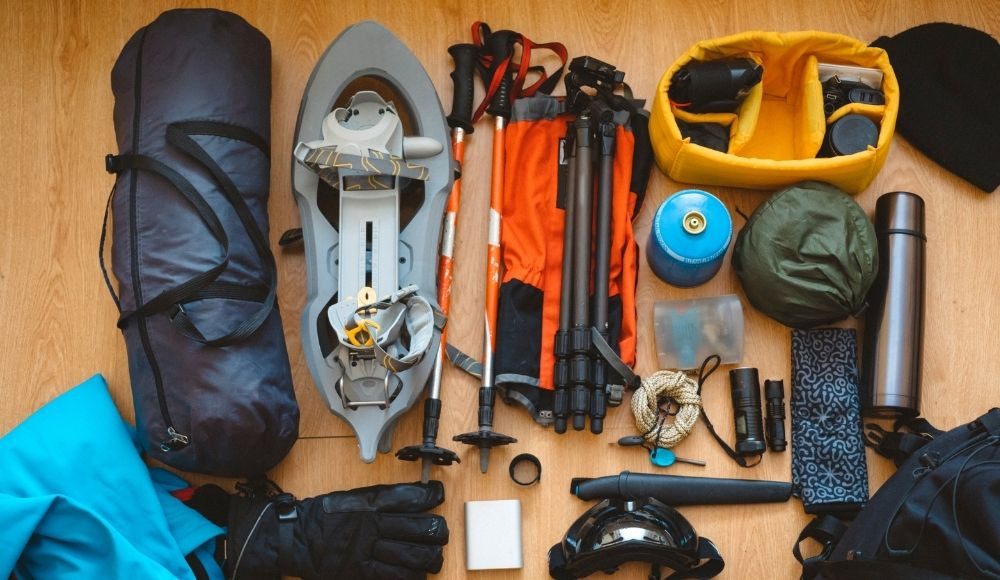
Invest in quality trekking gear and equipment, including clothing, footwear, backpack, sleeping gear, trekking poles, and navigation tools. Ensure that your gear is appropriate for the weather conditions, altitude, and terrain of your chosen trek. Test your equipment before departing for Nepal to ensure it is comfortable and functional.
Selecting a trekking agency or guide:
Hiring a reliable trekking agency or guide is essential for a safe and enjoyable trekking experience. Research and compare different agencies, read reviews, and ask for recommendations from friends or online forums. Ensure that the agency or guide you choose is registered, experienced, and knowledgeable about the trek you have selected.
Budget and costs:
Consider the costs associated with your trek, including permits, gear, transportation, accommodation, meals, guide and porter fees, and any additional activities or sightseeing. Create a budget and ensure you have enough funds to cover all expenses. Carry some extra cash in case of emergencies or unexpected costs.
Health precautions and vaccinations:
Consult with your doctor to discuss any health concerns or necessary vaccinations for travel to Nepal. Make sure you have an adequate supply of any prescription medications you may need during your trip.
Travel insurance:
Purchase comprehensive travel insurance that covers trekking at high altitudes, medical emergencies, evacuation, and trip cancellations or delays. Ensure that your insurance policy covers the maximum altitude of your chosen trek.
By properly preparing for your trek in Nepal, you can ensure a safe, enjoyable, and memorable experience in the majestic Himalayas.
Choosing the right trek in Nepal depends on several factors, including your personal preferences, physical fitness, and the time you have available. Here are some key aspects to consider:
Duration:
Treks in Nepal can range from a few days to several weeks. Consider how much time you have for trekking and factor in time for acclimatization and rest days. Short treks, like the Ghorepani Poon Hill Trek (4-5 days), are ideal for those with limited time. Longer treks, like the Annapurna Circuit Trek (18-21 days) or the Manaslu Circuit Trek (14-18 days), are more suitable for those who can afford a longer time commitment.
Difficulty:
Nepal offers treks suitable for all levels of fitness and experience, from easy to challenging. Assess your physical fitness and trekking experience before choosing a trek. If you are a beginner, consider starting with easier treks, like the Ghorepani Poon Hill Trek or the Langtang Valley Trek. Experienced trekkers can opt for more challenging treks, like the Everest Base Camp Trek or the Three Passes Trek. Be aware that some treks might require prior experience and technical skills, especially those involving mountaineering.
Altitude:
Altitude plays a significant role in determining the difficulty and potential health risks of a trek. Lower altitude treks, like the Ghorepani Poon Hill Trek (maximum altitude of 3,210 meters), have a lower risk of altitude-related illnesses. Higher altitude treks, like the Everest Base Camp Trek (maximum altitude of 5,545 meters), require more time for acclimatization and carry a higher risk of altitude sickness. Choose a trek that aligns with your experience, fitness, and comfort level with high altitudes.
The scenery and cultural experiences:
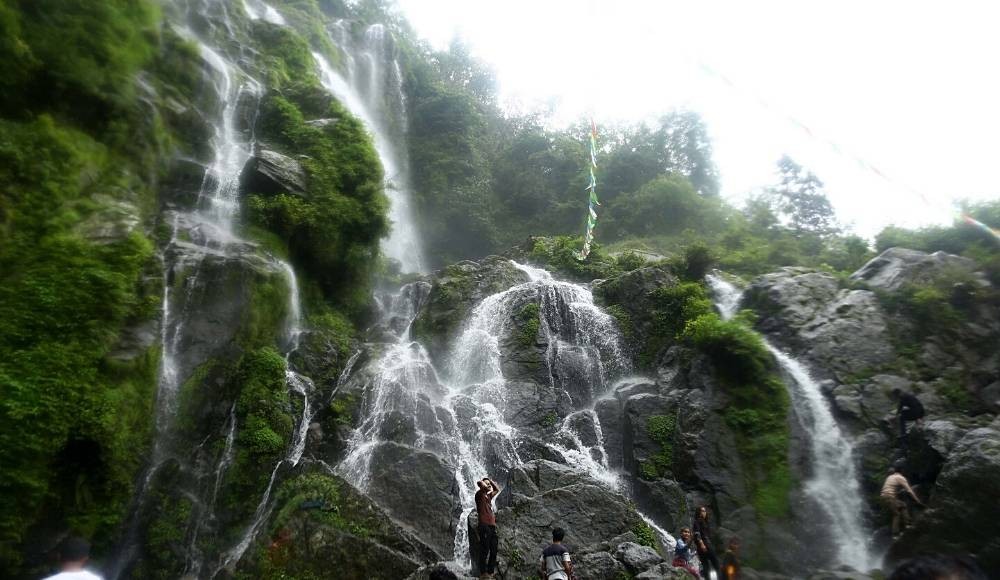
Consider the type of scenery and cultural experiences you want to have during your trek. If you are interested in panoramic mountain views and high-altitude landscapes, treks like the Everest Base Camp Trek or the Annapurna Base Camp Trek would be suitable. If you are more interested in exploring local culture and traditions, consider treks like the Upper Mustang Trek or the Manaslu Circuit Trek. Some treks, like the Langtang Valley Trek or the Kanchenjunga Base Camp Trek, offer a balanced combination of natural beauty and cultural experiences.
When choosing the right trek in Nepal, consider the trek's duration, difficulty, altitude, and the type of scenery and cultural experiences you desire. Research different trekking options, consult with a reputable trekking agency and be honest with yourself about your physical fitness and experience to ensure a safe and enjoyable trekking adventure.
Obtaining the necessary permits and documents for trekking in Nepal is crucial for a hassle-free experience. Here is an overview of the three main permits and documents required for most treks in Nepal:
TIMS Card:
The TIMS (Trekkers' Information Management System) Card is a basic permit required for most trekking routes in Nepal. It was introduced to record and track the movement of trekkers in the country to ensure their safety and security. There are two types of TIMS cards: one for independent trekkers (green) and another for trekkers who book their trek through a trekking agency (blue). TIMS cards can be obtained at the Nepal Tourism Board offices in Kathmandu or Pokhara. The cost of a TIMS card is USD 20 for individual trekkers and USD 10 for trekkers who are part of a group through a registered trekking agency.
National Park or Conservation Area permits:
Most trekking routes in Nepal pass through national parks or conservation areas, which require entry permits. These permits are necessary to support the maintenance and conservation of these protected areas. The cost and process of obtaining these permits vary depending on the specific park or conservation area. Some popular national park permits include:
Sagarmatha National Park (Everest Region): NPR 3,000 (approximately USD 25) for foreign nationals, available at the park entrance in Monjo.
Annapurna Conservation Area Permit (ACAP): NPR 3,000 (approximately USD 25) for foreign nationals, available at the Nepal Tourism Board offices in Kathmandu or Pokhara.
Langtang National Park: NPR 3,000 (approximately USD 25) for foreign nationals, available at the Nepal Tourism Board offices in Kathmandu or the park entrance in Dhunche.
Restricted area permits:
Some trekking areas in Nepal are classified as restricted areas due to their cultural, environmental, or political significance. Treks in these areas require special permits, which can only be obtained through registered trekking agencies. These permits are generally more expensive and have specific regulations, such as requiring a minimum of two trekkers and a government-authorized guide. Examples of restricted area permits include:
Upper Mustang and Upper Dolpo: USD 500 per person for the first ten days and USD 50 per person per day thereafter.
Manaslu Region: USD 70 per person per week (September-November) and USD 50 per person per week (December-August) for the first week, with an additional USD 10 per person per day thereafter.
Nar-Phu Valley: USD 90 per person per week (September-November) and USD 75 per person per week (December-August).
It is essential to check the specific permit requirements for your chosen trek and ensure that you have all the necessary permits and documents before embarking on your trekking adventure in Nepal. Your trekking agency or guide can help you obtain the required permits and provide you with up-to-date information on costs and regulations.
Physical fitness and training are essential for a successful and enjoyable trekking experience in Nepal. Trekking, especially at high altitudes, can be physically demanding, and proper preparation can significantly improve your overall experience. Here are some guidelines for improving your fitness and training for a trek in Nepal:
Cardiovascular training:
Cardiovascular endurance is crucial for trekking, as you will be walking for several hours a day, often on steep and challenging terrain. Begin your cardiovascular training at least three months before your trek. Incorporate activities like running, cycling, swimming, or stair climbing into your routine. Aim for at least 30 minutes of moderate-intensity exercise 4-5 times a week, gradually increasing the duration and intensity as your fitness improves.
Strength training:
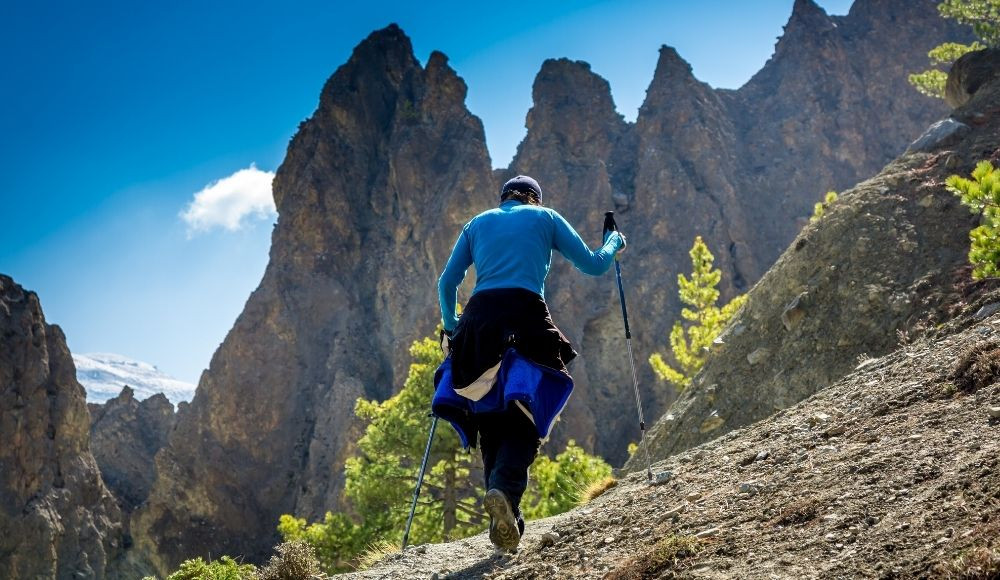
Trekking in Nepal involves navigating uneven terrain and carrying a backpack, so building muscle strength, particularly in your legs and core, is vital. Incorporate strength training exercises into your routine at least 2-3 times a week. Focus on exercises like squats, lunges, calf raises, step-ups, and deadlifts for your legs, and planks, sit-ups, and leg raises for your core. Don't neglect your upper body – work on your shoulders, back, and arms with exercises like push-ups, pull-ups, and rows.
Flexibility and balance training:
Flexibility and balance are essential for injury prevention and overall comfort during your trek. Incorporate stretching exercises into your daily routine, focusing on your legs, hips, and back. Yoga is an excellent way to improve flexibility, balance, and strength. Aim to practice yoga or perform flexibility exercises at least 2-3 times a week.
Hiking and hill training:
To simulate the conditions of trekking in Nepal, incorporate hiking and hill training into your fitness routine. Find local trails or hills and go for hikes carrying a backpack with a similar weight to what you'll carry on your trek. This will help you get used to walking on uneven terrain, test your gear, and improve your overall endurance and strength. Try to go for at least one long hike per week, gradually increasing the distance and elevation gain.
Altitude training (if possible):
If you have access to high-altitude environments, consider incorporating altitude training into your routine. Exercising at high altitudes can help your body acclimate to lower oxygen levels, which is beneficial for trekking in Nepal. However, if you don't have access to high-altitude environments, don't worry; proper acclimatization during your trek is more important.
Rest and recovery:
Don't forget to incorporate rest days and recovery time into your training schedule. Overtraining can lead to injuries and burnout. Ensure you get enough sleep, maintain a balanced diet, and stay hydrated to support your body's recovery and overall health.
Remember that every individual's fitness level and needs may vary. Consult with a healthcare professional or fitness trainer to develop a training plan tailored to your specific needs and goals. By properly preparing for your trek in terms of physical fitness and training, you can ensure a safe, enjoyable, and successful trekking experience in Nepal.
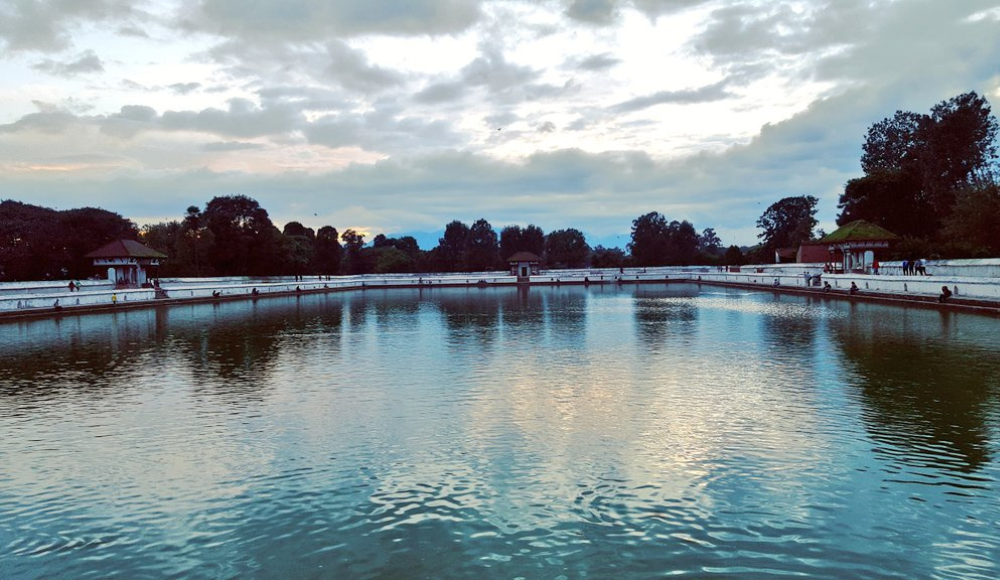
Having the appropriate trekking gear and equipment is crucial for a comfortable and enjoyable trekking experience in Nepal. Here's a list of essential items to consider:
Clothing:
Base layers (moisture-wicking material)
Mid-layers (fleece or down jacket)
Outer layers (waterproof and breathable jacket and pants)
Insulating hat, gloves, and socks
Trekking pants and shorts
Undergarments and sports bras
Footwear:
Sturdy, waterproof trekking boots (broken in before the trek)
Lightweight shoes or sandals for camp
High-quality trekking socks (synthetic or wool blend)
Backpack and sleeping gear:
Backpack with rain cover (40-60 liters)
Waterproof bags or pack liners
Lightweight and warm sleeping bag (rated for the temperatures you will encounter)
Inflatable pillow (optional)
Trekking poles:
Adjustable trekking poles with shock absorption (optional but recommended)
Navigation tools:
Map and compass or GPS device
Guidebook or trekking route information
Personal medical kit:
Basic first aid supplies (band-aids, gauze, adhesive tape, etc.)
Personal medications (prescriptions, pain relievers, etc.)
Altitude sickness medication (e.g., Diamox)
Diarrhea medication (e.g., Imodium)
Rehydration salts or electrolyte tablets
Blister treatment (e.g., moleskin or blister plasters)
Antiseptic cream or wipes
Sunscreen (SPF 30 or higher) and lip balm with SPF
Insect repellent
Miscellaneous items:
Water bottles or hydration bladder (2-3 liters capacity)
Water purification tablets or the portable water filter
Headlamp with extra batteries
Multi-tool or pocket knife
Sunglasses with UV protection
Lightweight, quick-drying towel
Camera, extra batteries, and memory cards
Portable battery pack or solar charger for electronic devices
Snacks (energy bars, trail mix, etc.)
Travel documents (passport, permits, insurance information, etc.)
Cash in local currency
Lightweight daypack for summit days or side trips (optional)
Biodegradable toilet paper and hand sanitizer
Plastic bags for trash and wet clothes
Earplugs for noisy lodges or sleeping in tents
Remember that the specific gear and equipment you need will depend on factors such as the trek's duration, altitude, and weather conditions. Always check the gear list provided by your trekking agency or guide and consult with them if you have any questions. Test your equipment before departing for Nepal to ensure it is comfortable and functional, and be prepared to rent or purchase any additional items you might need once you arrive in the country.
Trekking in Nepal can vary in cost depending on various factors such as the trekking region, duration, level of service, and time of year. Here's an overview of the main factors that can impact your budget and costs when planning a trek in Nepal:
Trekking region:
Some regions are more expensive to trek in than others. For instance, trekking in restricted areas like Upper Mustang or Upper Dolpo requires more expensive permits compared to more popular regions like the Annapurna or Everest regions.
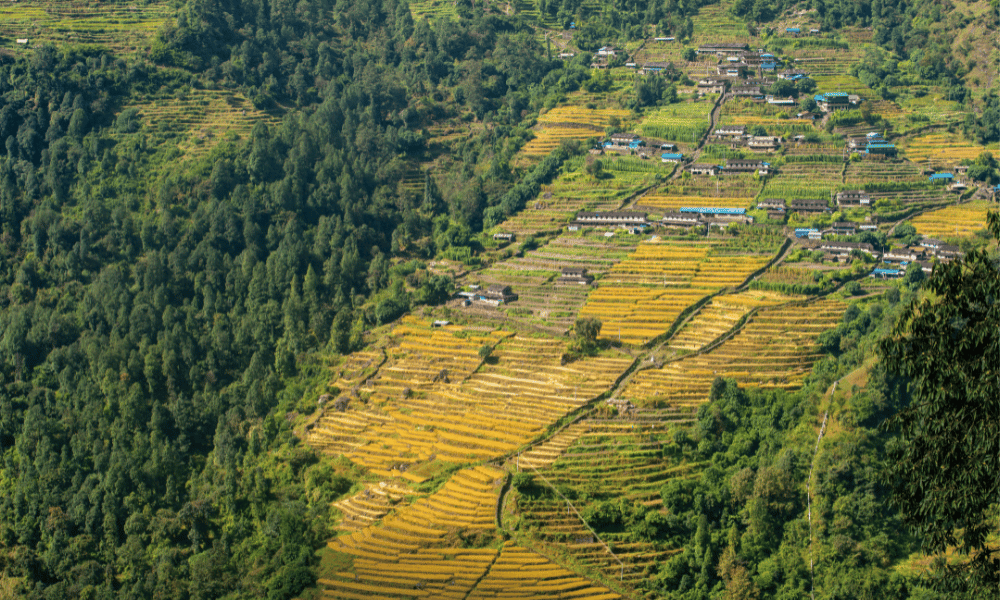
Duration:
The longer your trek, the higher your overall costs will be. Expenses such as accommodation, meals, guide and porter fees, and transportation will increase with the trek's duration.
Level of service:
Your budget will also depend on the level of service you choose. A fully organized trek with a guide, porters, and all meals and accommodations included will cost more than an independent trek where you arrange your accommodation and meals. Luxury treks with high-end lodges and services will have a significantly higher cost.
Time of year:
The trekking season can impact costs, as prices for accommodation, food, and transportation may be higher during peak trekking seasons (spring and autumn) compared to off-peak seasons (summer and winter).
Accommodation:
Teahouse treks are generally more budget-friendly, as they offer basic accommodation and meals at a lower cost. Camping treks or treks with higher-end lodges will increase your overall expenses.
Guide and porter fees:
Hiring a guide and/or porter will add to your trekking costs. Rates can vary, but you can expect to pay around USD 30-40 per day for a guide and USD 20-25 per day for a porter, plus tips.
Permits and fees:
The cost of trekking permits and fees, such as TIMS cards, national park entry fees, and restricted area permits, should also be considered in your budget.
Transportation:
Travel expenses to and from the trek's starting and ending points, including flights, buses, or private vehicles, will also impact your budget.
Equipment and gear:
If you need to buy or rent trekking gear and equipment, this can add to your overall costs. Prices for gear rental in Nepal can vary, but you can expect to spend around USD 1-3 per item per day.
Miscellaneous expenses:
Additional expenses, such as snacks, beverages, charging electronic devices, Wi-Fi, hot showers, and tips for guides and porters, should also be factored into your budget.
As a rough estimate, a budget teahouse trek in popular regions like the Annapurna or Everest regions can cost around USD 60-80 per person per day, excluding guide and porter fees. Luxury treks or treks in more remote regions can cost significantly more. It's essential to plan and research your trekking options and create a realistic budget based on your preferences and requirements.
Health precautions and travel insurance are essential considerations when planning a trek in Nepal. Taking necessary health precautions can help prevent illness and ensure a safe and enjoyable trekking experience, while comprehensive travel insurance provides financial protection in case of emergencies.
Vaccinations: Consult your healthcare provider at least six weeks before your trip to discuss necessary vaccinations. Recommended vaccinations for Nepal typically include Hepatitis A, Hepatitis B, Typhoid, Japanese Encephalitis, Rabies, and routine vaccinations such as measles, mumps, rubella (MMR), diphtheria-tetanus-pertussis, varicella (chickenpox), and polio. Keep in mind that vaccination requirements may change, so check with your healthcare provider for the most up-to-date information.
Altitude sickness: Acute Mountain Sickness (AMS) is a common health issue for trekkers in Nepal. To minimize the risk of AMS, follow a gradual acclimatization schedule, stay hydrated, and avoid alcohol and tobacco. Consider bringing altitude sickness medication like Diamox (acetazolamide) and discuss its use with your healthcare provider.
Water and food safety: To prevent waterborne illnesses, drink only bottled or properly treated water. Avoid consuming tap water or water from streams without treatment. When eating, opt for freshly cooked meals and avoid uncooked or undercooked meat, seafood, and raw vegetables.
Personal hygiene: Wash your hands frequently with soap and water or use hand sanitizer, especially before eating and after using the toilet. Bring a personal medical kit with essential items like band-aids, pain relievers, diarrhea medication, and rehydration salts.
Insect protection: Use insect repellent and wear long-sleeved shirts and pants to avoid insect bites, which can transmit diseases like dengue fever or malaria. Consult your healthcare provider about the need for antimalarial medication.
When trekking in Nepal, it's crucial to have comprehensive travel insurance that covers the following:
Emergency medical coverage: Ensure that your insurance policy includes coverage for emergency medical treatment, hospitalization, and medical evacuation (including helicopter evacuation). Medical treatment and evacuation can be costly in remote areas, so it's essential to have adequate coverage.
Altitude coverage: Some insurance policies may not cover trekking at high altitudes. Check the maximum altitude covered by your policy and make sure it's suitable for the trek you're planning.
Trip cancellation and interruption: Unforeseen circumstances, such as illness or natural disasters, may force you to cancel or interrupt your trek. Look for a policy that covers trip cancellation and interruption expenses, including transportation, accommodation, and other pre-paid costs.
Lost, stolen, or damaged luggage: Your policy should provide coverage for lost, stolen, or damaged luggage and personal belongings.
Adventure sports and activities: If you plan to participate in adventure sports or activities during your treks, such as paragliding or rafting, ensure that your insurance policy covers these activities.
Personal liability: In case you accidentally cause injury to another person or damage their property, personal liability coverage can be useful.
When selecting travel insurance, compare different policies and providers, read the fine print, and ensure that you understand the coverage, exclusions, and limitations. Keep your insurance policy information, including the policy number and emergency contact details, easily accessible during your trek.
By taking appropriate health precautions and obtaining comprehensive travel insurance, you can minimize risks and enjoy a safer and more worry-free trekking experience in Nepal.
Nepal experiences four distinct seasons, and each offers unique trekking experiences with varying weather conditions, landscapes, and challenges. Here's a detailed overview of the best time to trek in Nepal:
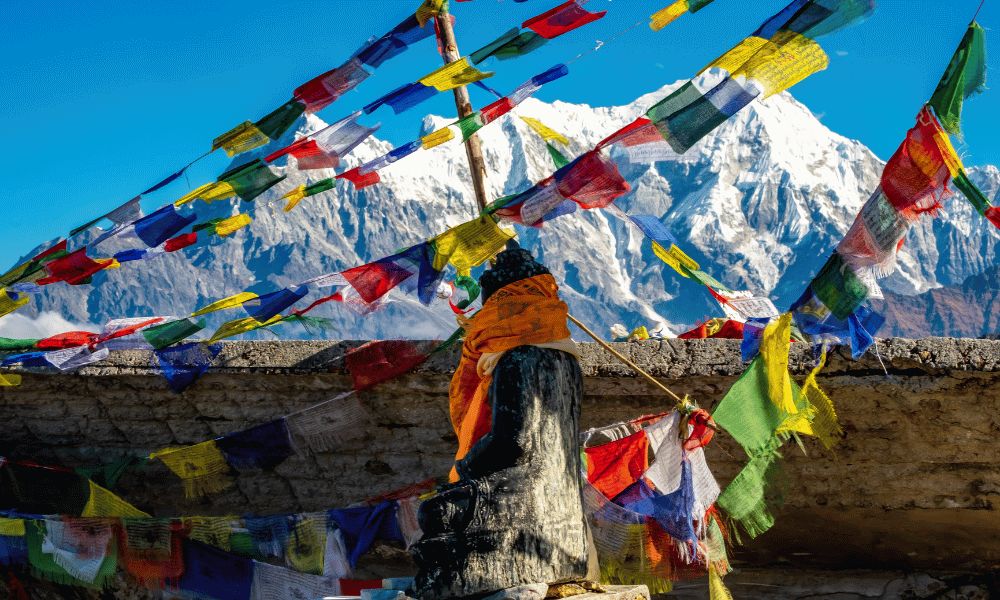
Spring is considered one of the best times to trek in Nepal, as the weather is generally stable, with mild to warm temperatures and clear skies.
Pros:
Rhododendron and other wildflowers are in full bloom, adding color and beauty to the trails.
Clear skies and pleasant temperatures make for comfortable trekking conditions.
Pre-monsoon clouds can create dramatic landscapes and stunning photo opportunities.
Cons:
Trails can be crowded, especially in popular trekking regions like Annapurna and Everest.
As the season progresses, temperatures may rise, making lower-altitude treks less comfortable.
Autumn is the peak trekking season in Nepal, offering stable weather, clear skies, and moderate temperatures.
Pros:
Post-monsoon, the landscape is lush and green, with excellent visibility for mountain views.
The weather is generally dry and stable, with pleasant daytime temperatures and cool nights.
Cultural festivals like Dashain and Tihar occur during this season, offering opportunities for cultural immersion.
Cons:
Trails and accommodations can be crowded due to the popularity of the season.
Teahouses and lodges may require advanced booking, and prices may be higher.
The monsoon season is the least popular time for trekking in Nepal, as heavy rains, mudslides, and leeches can create challenging trekking conditions.
Pros:
Fewer trekkers on the trails, providing a more peaceful and solitary experience.
Some rain-shadow areas like Upper Mustang, Dolpo, and Nar Phu are still suitable for trekking during this season.
The landscape is incredibly green and lush, with waterfalls and wildflowers in abundance.
Cons:
Heavy rain, muddy trails, and increased risk of landslides and flooding.
Reduced visibility and cloud cover may obscure mountain views.
Leeches and mosquitoes are more prevalent during this season.
Winter is the off-peak trekking season in Nepal, characterized by cold temperatures, snow, and short daylight hours.
Pros:
Trails are less crowded, offering a more tranquil trekking experience.
Crisp and clear skies can provide stunning mountain views.
Lower-altitude treks (below 3,000 meters) are still accessible and enjoyable during this season.
Cons:
Cold temperatures, especially at higher elevations, can be challenging and require proper clothing and equipment.
Some high passes and remote regions may be inaccessible due to heavy snowfall and avalanche risks.
Daylight hours are shorter, which can limit daily trekking time.
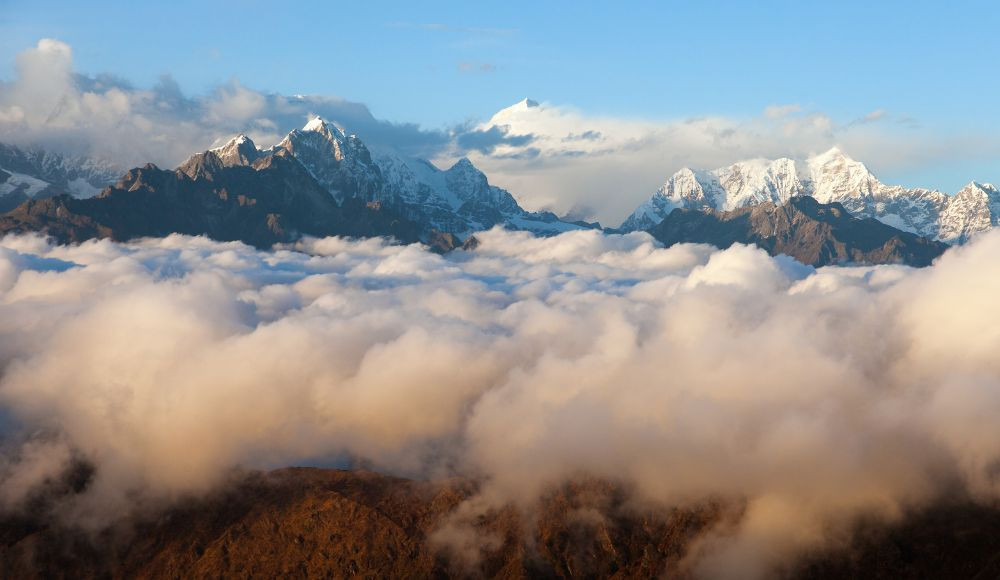
Ultimately, the best time to trek in Nepal depends on your preferences, the trekking region, and your tolerance for varying weather conditions. Spring and autumn are the most popular seasons, offering the best combination of stable weather and clear skies, while monsoon and winter seasons are suitable for more adventurous trekkers or those seeking solitude.
The Everest region, also known as the Khumbu region, is one of the most popular trekking destinations in Nepal. It offers a variety of trekking routes with breathtaking mountain views, challenging terrains, and unique cultural experiences. Here are the details of three prominent treks in the Everest region:
The Everest Base Camp (EBC) Trek is the most famous trek in the region, taking trekkers to the base of the world's highest mountain, Mount Everest (8,848 meters).
Duration: 12-16 days
Route: The classic EBC trek starts with a flight from Kathmandu to Lukla. From Lukla, the trek follows the Dudh Kosi river valley, passing through Phakding, Namche Bazaar, Tengboche, Dingboche, Lobuche, and Gorak Shep before reaching Everest Base Camp. The return journey typically follows the same route, with an additional hike to Kala Patthar for spectacular panoramic views of Mount Everest and the surrounding peaks.
Highlights:
Visit the iconic Everest Base Camp (5,364 meters) and Kala Patthar (5,545 meters).
Explore the bustling Sherpa town of Namche Bazaar.
Experience the vibrant Tengboche Monastery.
Enjoy stunning views of Mount Everest, Lhotse, Nuptse, Ama Dablam, and other peaks.
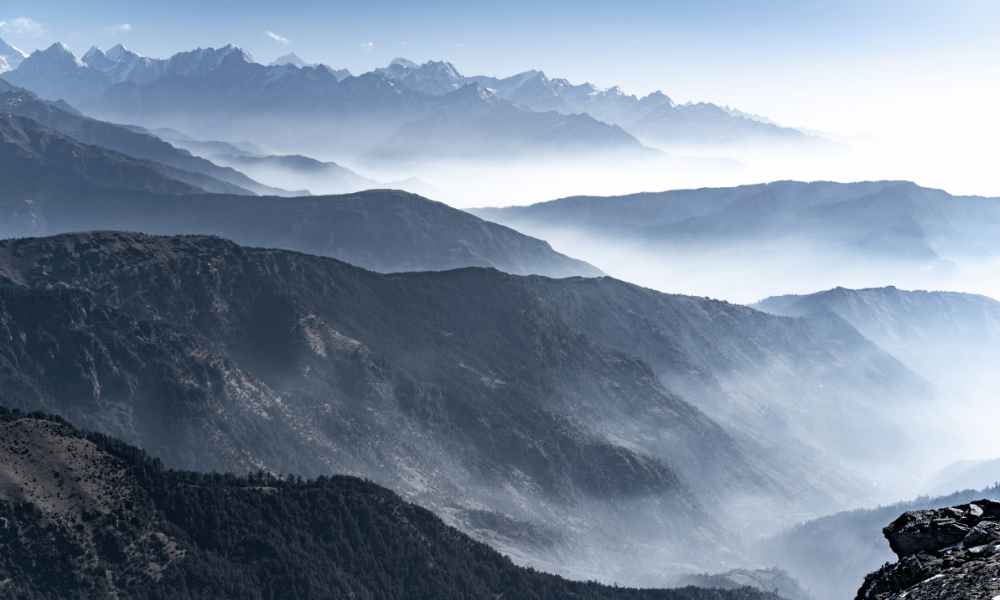
The Gokyo Lakes Trek is a less crowded alternative to the EBC trek, offering stunning views of the turquoise Gokyo Lakes and the surrounding Himalayas.
Duration: 12-15 days
Route: The Gokyo Lakes trek also starts with a flight from Kathmandu to Lukla. The trail follows the same route as the EBC trek until it reaches Sanasa, where it diverges towards Dole, Machhermo, and finally Gokyo. The trek involves a hike to Gokyo Ri (5,357 meters) for panoramic views of the lakes and mountains before returning to Lukla via Phortse and Namche Bazaar.
Highlights:
Explore the pristine Gokyo Lakes, the world's highest freshwater lake system.
Climb Gokyo Ri for stunning views of Mount Everest, Lhotse, Makalu, Cho Oyu, and other peaks.
Visit the Ngozumpa Glacier, the longest glacier in the Himalayas.
Enjoy the picturesque valleys, diverse flora and fauna, and the unique Sherpa culture.
The Three Passes Trek is a challenging and adventurous trek in the Everest region, taking trekkers across three high mountain passes: Kongma La (5,535 meters), Cho La (5,420 meters), and Renjo La (5,360 meters).
Duration: 18-22 days
Route: The trek begins with a flight from Kathmandu to Lukla and follows the EBC trek route until Dingboche. From there, the trail diverges to cross the Kongma La pass, followed by a visit to Everest Base Camp and Kala Patthar. The trek then proceeds to cross the Cho La pass and visits the Gokyo Lakes. Finally, trekkers cross the Renjo La pass and return to Lukla via Thame and Namche Bazaar.
Highlights:
Cross three challenging high mountain passes, offering incredible views of the Himalayas.
Visit both Everest Base Camp and the Gokyo Lakes.
Experience remote and unspoiled valleys, glaciers, and traditional Sherpa villages.
Enjoy unparalleled panoramic views of Mount Everest, Lhotse, Makalu, Cho Oyu, and other peaks.
Each of these treks offers a different experience in the Everest region.
The Annapurna region, located in north-central Nepal, is one of the most popular trekking destinations in the country. This region offers diverse landscapes, vibrant culture, and impressive views of the Annapurna and Dhaulagiri massifs. Here are the details of three well-known treks in the Annapurna region:
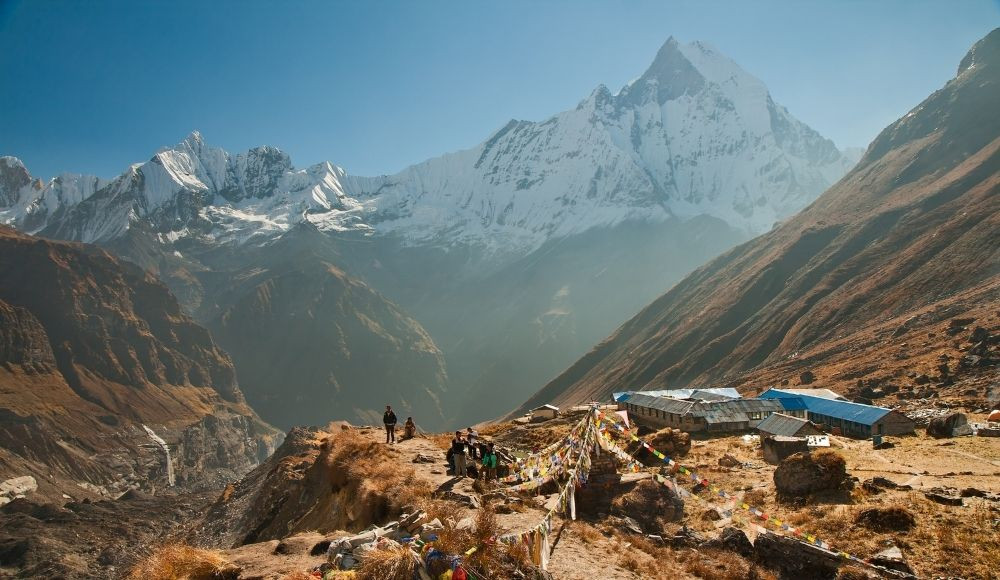
The Annapurna Base Camp (ABC) Trek takes trekkers to the base of the Annapurna massif, offering stunning views of Annapurna I, Annapurna South, Hiunchuli, and Machhapuchhre (Fishtail) peaks.
Duration: 10-14 days
Route: The trek begins in Nayapul or Kande, after a short drive from Pokhara. The trail passes through picturesque villages, terraced fields, and dense forests, with stops at Tikhedhunga, Ghorepani, Tadapani, Chhomrong, and Dobhan before reaching the Annapurna Base Camp. The return journey follows a similar route, with some variations depending on the itinerary.
Highlights:
Reach the Annapurna Base Camp (4,130 meters) with panoramic views of the Annapurna massif.
Visit the Ghorepani Poon Hill viewpoint for sunrise views of the Himalayas.
Experience the Gurung and Magar culture in traditional villages.
Enjoy the diverse landscapes of lush forests, terraced fields, and alpine meadows.
The Annapurna Circuit Trek is a classic trek that takes trekkers around the entire Annapurna massif, crossing the Thorong La pass (5,416 meters) and visiting the sacred Muktinath temple.
Duration: 15-21 days
Route: The trek typically starts in Besisahar and follows the Marsyangdi River valley, passing through villages like Chamje, Dharapani, Chame, and Pisang before reaching Manang. From Manang, the trail ascends to Thorong Phedi or High Camp, then crosses the Thorong La pass and descends to Muktinath. The trek continues through Jomsom, Marpha, and Tatopani, finally reaching Ghorepani and descending to Nayapul.
Highlights:
Cross the challenging Thorong La pass, one of the highest trekking passes in the world.
Explore the Manang and Mustang valleys, with their unique culture and landscapes.
Visit the sacred Muktinath temple, an important pilgrimage site for Hindus and Buddhists.
Experience diverse landscapes, from subtropical forests to arid, high-altitude deserts.
The Ghorepani Poon Hill Trek is a shorter and more accessible trek in the Annapurna region, perfect for those with limited time or seeking a less challenging trek.
Duration: 4-6 days
Route: The trek starts in Nayapul, after a short drive from Pokhara. The trail passes through traditional villages and terraced fields, with stops at Tikhedhunga, Ulleri, and Ghorepani. The highlight of the trek is the sunrise hike to Poon Hill (3,210 meters), offering panoramic views of the Annapurna and Dhaulagiri massifs. The trek continues through Tadapani and Ghandruk before returning to Nayapul.
Highlights:
Sunrise views from Poon Hill: Witness spectacular sunrise views of the Annapurna, Dhaulagiri, Machhapuchhre, and other peaks from Poon Hill, one of the most famous viewpoints in the region.
Rhododendron forests: Walk through dense rhododendron forests, which bloom with vibrant colors during the spring season.
Traditional villages: Explore charming Gurung and Magar villages such as Ghandruk and Ulleri, and learn about their rich culture and traditional lifestyle.
Accessible trekking: This relatively easy trek can be completed in a short amount of time, making it suitable for families, beginners, or those with limited time.
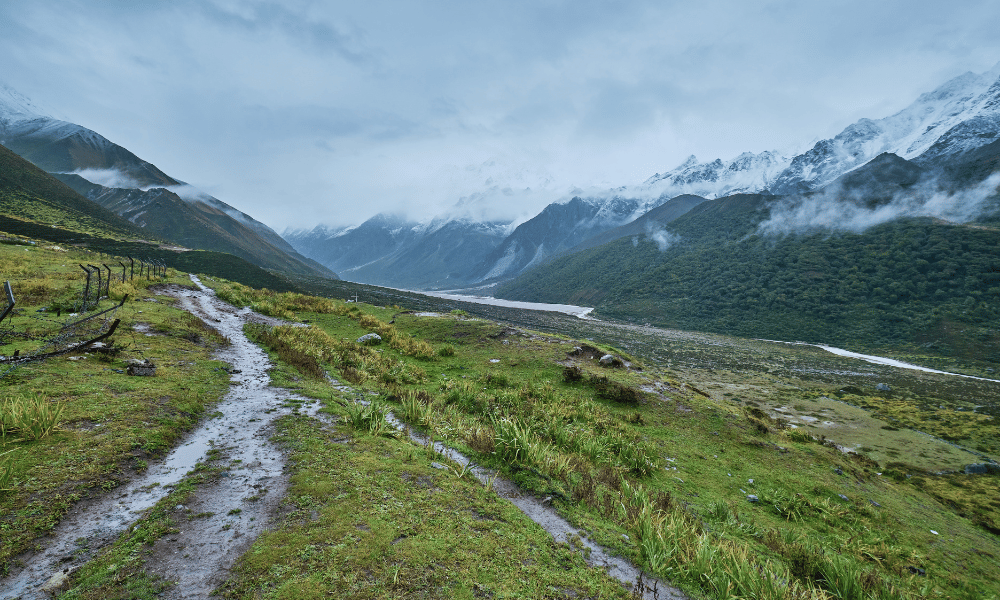
The Langtang region, located north of Kathmandu, offers relatively accessible trekking routes with fewer crowds than the popular Annapurna and Everest regions. The area boasts rich Tamang and Tibetan-influenced culture, dramatic landscapes featuring dense forests, terraced fields, and high mountain peaks. Here are the details of two well-known treks in the Langtang region:
The Langtang Valley Trek takes trekkers through a beautiful valley offering stunning views of the Langtang Lirung, Ganesh Himal, and other peaks, while also providing a glimpse into the traditional Tamang culture.
Duration: 7-10 days
Route: The trek begins in Syabrubesi, after a 7-8 hour drive from Kathmandu. The trail follows the Langtang River, passing through bamboo forests and traditional Tamang villages such as Lama Hotel, Mundu, and Langtang village before reaching the Kyanjin Gompa. Trekkers can explore the Kyanjin Gompa area, visit a local cheese factory, and climb Tserko Ri or Kyanjin Ri for panoramic mountain views. The return journey follows the same route back to Syabrubesi.
Highlights:
Discover the scenic Langtang Valley, known as the "Valley of Glaciers."
Experience the rich Tamang culture and visit ancient monasteries, such as Kyanjin Gompa.
Enjoy panoramic mountain views from Tserko Ri or Kyanjin Ri.
Observe diverse flora and fauna in the Langtang National Park.
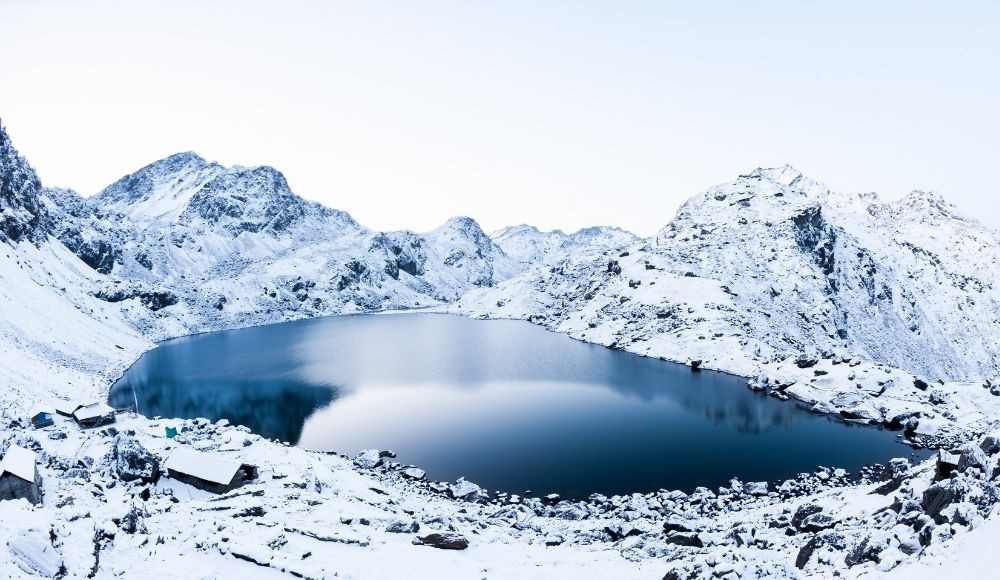
The Gosaikunda Trek leads trekkers to the sacred Gosaikunda Lake, an important pilgrimage site for both Hindus and Buddhists, surrounded by high mountain peaks.
Duration: 7-9 days
Route: The trek starts in Dhunche or Syabrubesi, after a 7-8 hour drive from Kathmandu. The trail passes through dense forests and traditional Tamang villages, such as Thulo Syabru, Sing Gompa (Chandanbari), and Laurebina Yak. The trail continues to the Gosaikunda Lake, a glacial lake located at an altitude of 4,380 meters. After exploring the Gosaikunda area, the return journey retraces the same route back to Dhunche or Syabrubesi.
Highlights:
Visit the sacred Gosaikunda Lake, a significant pilgrimage site for Hindus and Buddhists.
Witness panoramic mountain views of the Langtang and Ganesh Himal ranges.
Experience the rich Tamang culture in traditional villages.
Trek through diverse landscapes, including dense forests, alpine meadows, and high mountain terrain.
Both treks in the Langtang region offer unique cultural experiences, breathtaking landscapes, and an opportunity to explore relatively less-traveled trails. The best time to trek in the Langtang region is during spring (March-May) and autumn (September-November), when the weather is stable, and the mountain views are clear.
The Manaslu region, centered around the eighth-highest peak in the world, Mount Manaslu (8,163 meters), offers remote and less-traveled trekking routes. The region is famous for its rich culture, unspoiled nature, and stunning mountain views. The most popular trek in the Manaslu region is the Manaslu Circuit Trek.
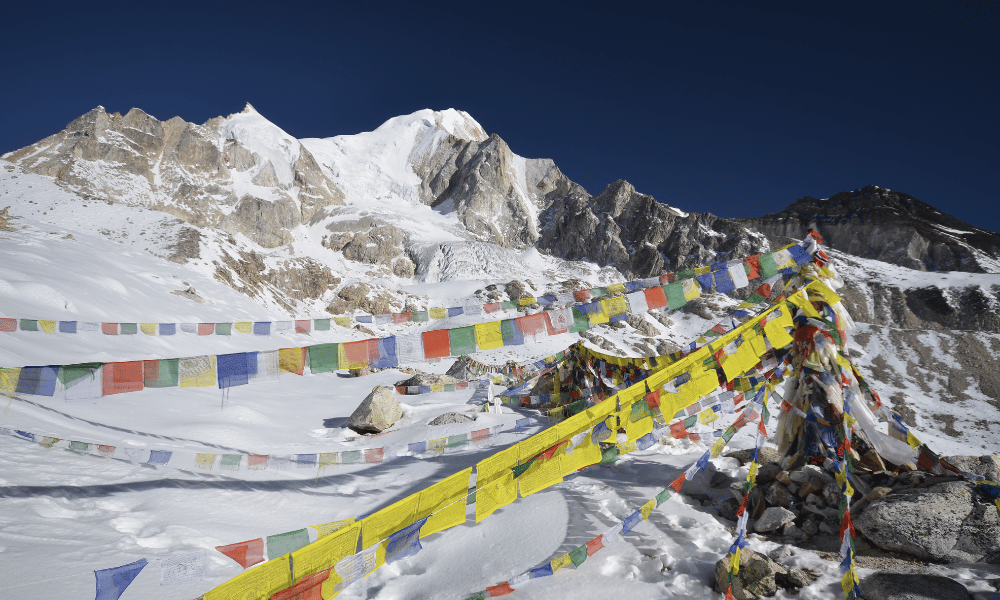
The Manaslu Circuit Trek takes trekkers around the Manaslu massif, providing an opportunity to experience the diverse landscapes, traditional villages, and incredible mountain views of the region.
Duration: 14-18 days
Route: The trek starts in Soti Khola, after a 7-8 hour drive from Kathmandu. The trail follows the Budhi Gandaki River valley, passing through traditional villages such as Machha Khola, Jagat, Deng, Namrung, and Samagaon. After acclimatizing in Samagaon, the trek continues to Samdo, Dharamsala (Larkya Phedi), and then crosses the challenging Larkya La pass (5,160 meters) before descending to Bhimtang. The trail continues through Tilije and Dharapani, where it connects with the Annapurna Circuit route. The trek ends in Besi Sahar, followed by a drive back to Kathmandu.
Highlights:
Traverse the remote and diverse landscapes of the Manaslu region, including subtropical forests, terraced fields, alpine meadows, and high mountain passes.
Cross the challenging Larkya La pass, offering spectacular views of Manaslu, Himal Chuli, Kang Guru, and Annapurna II.
Experience the unique culture of the Nubri and Tsum people, influenced by Tibetan Buddhism.
Visit ancient monasteries, such as Rachen Gompa and Mu Gompa in the Tsum Valley (optional side trip).
Enjoy the off-the-beaten-path trekking experience with fewer crowds than the more popular Annapurna and Everest regions.
Best Time to Trek:
The best time to trek the Manaslu Circuit is during the spring (March-May) and autumn (September-November) seasons. These periods offer stable weather, clear skies, and pleasant temperatures, providing the best conditions for trekking and viewing the mountain scenery. The trek can also be done during the winter (December-February), but expect colder temperatures and potential snowfall. The monsoon season (June-August) is generally not recommended due to heavy rainfall and potential landslides.
Permits and Regulations:
Trekkers are required to obtain the following permits for the Manaslu Circuit Trek:
Restricted Area Permit (RAP): This permit is necessary for trekking in the restricted area of the Manaslu region. The permit cost varies depending on the duration of the trek and the season.
Manaslu Conservation Area Project (MCAP) permit: This permit is required to enter the Manaslu Conservation Area.
Annapurna Conservation Area Project (ACAP) permit: This permit is necessary for the final section of the trek when it connects with the Annapurna Circuit route.
Additionally, the Manaslu Circuit Trek requires a minimum of two trekkers and a registered guide due to its restricted area status.
The Manaslu Circuit Trek offers a remote and challenging trekking experience around the majestic Manaslu massif, with diverse landscapes, rich cultural experiences, and breathtaking mountain views.
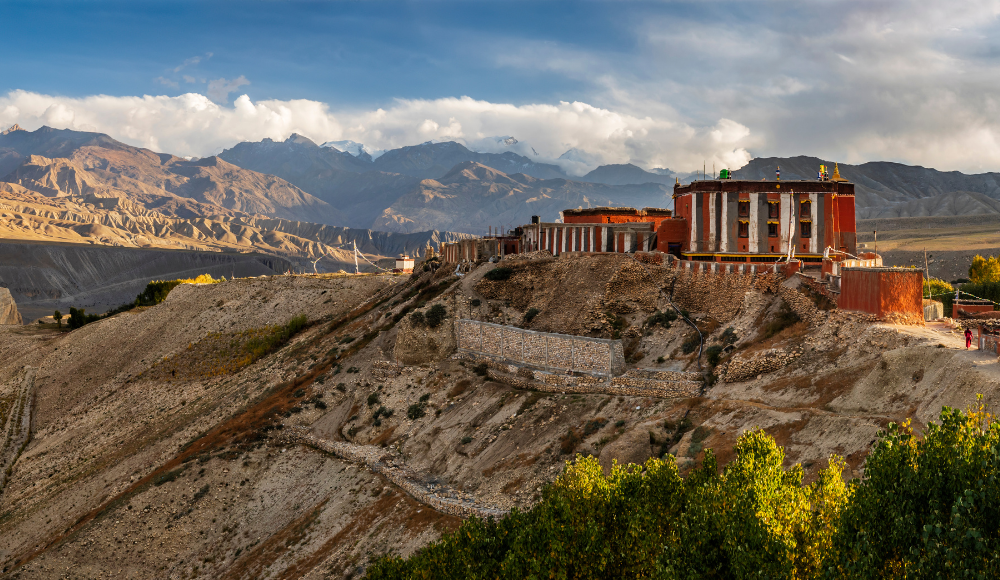
The Mustang region, located in the north-central part of Nepal, is known for its unique landscapes, rich Tibetan-influenced culture, and ancient history. The region is divided into two parts: Lower Mustang, which is part of the Annapurna Circuit, and Upper Mustang, a restricted area that requires a special permit to visit. The Upper Mustang Trek is the most popular trek in the region, exploring the ancient Kingdom of Lo.
The Upper Mustang Trek takes trekkers through the arid and windswept landscape of the former Kingdom of Lo, offering a glimpse into the preserved Tibetan Buddhist culture, ancient cave monasteries, and stunning vistas of the Annapurna and Dhaulagiri massifs.
Duration: 12-16 days
Route: The trek begins in Jomsom, which can be reached by a short flight from Pokhara or via the Annapurna Circuit route. From Jomsom, the trail passes through the villages of Kagbeni, Chele, Syanboche, and Ghami before reaching the walled city of Lo-Manthang, the former capital of the Kingdom of Lo. Trekkers can spend a day or two exploring Lo-Manthang, visiting ancient monasteries, and experiencing the local culture. The return journey can follow the same route or a slightly different path through the villages of Drakmar, Ghiling, and Samar before rejoining the main trail.
Highlights:
Explore the remote and arid landscape of Upper Mustang, reminiscent of the Tibetan Plateau.
Visit Lo-Manthang, the walled former capital of the ancient Kingdom of Lo, and its centuries-old monasteries.
Experience the well-preserved Tibetan Buddhist culture and traditions.
Discover ancient cave monasteries and unique rock formations.
Enjoy the stunning views of the Annapurna and Dhaulagiri massifs.
Best Time to Trek:
The best time to trek in Upper Mustang is during the spring (March-May) and autumn (September-November) seasons, offering stable weather and clear skies for mountain views. The Upper Mustang region is located in the rain shadow of the Annapurna and Dhaulagiri massifs, making it a suitable destination for trekking even during the monsoon season (June-August). Winter (December-February) trekking is possible but can be challenging due to cold temperatures and snow.
Permits and Regulations:
Trekkers are required to obtain the following permits for the Upper Mustang Trek:
Restricted Area Permit (RAP): This permit is necessary for trekking in the restricted area of Upper Mustang. The permit cost is USD 500 per person for the first 10 days and an additional USD 50 per person per day thereafter.
Annapurna Conservation Area Project (ACAP) permit: This permit is required to enter the Annapurna Conservation Area, which includes the Mustang region.
Additionally, the Upper Mustang Trek requires a minimum of two trekkers and a registered guide due to its restricted area status.
The Upper Mustang Trek offers a unique and remote trekking experience in the ancient Kingdom of Lo, with its well-preserved culture, arid landscapes, and breathtaking mountain views.
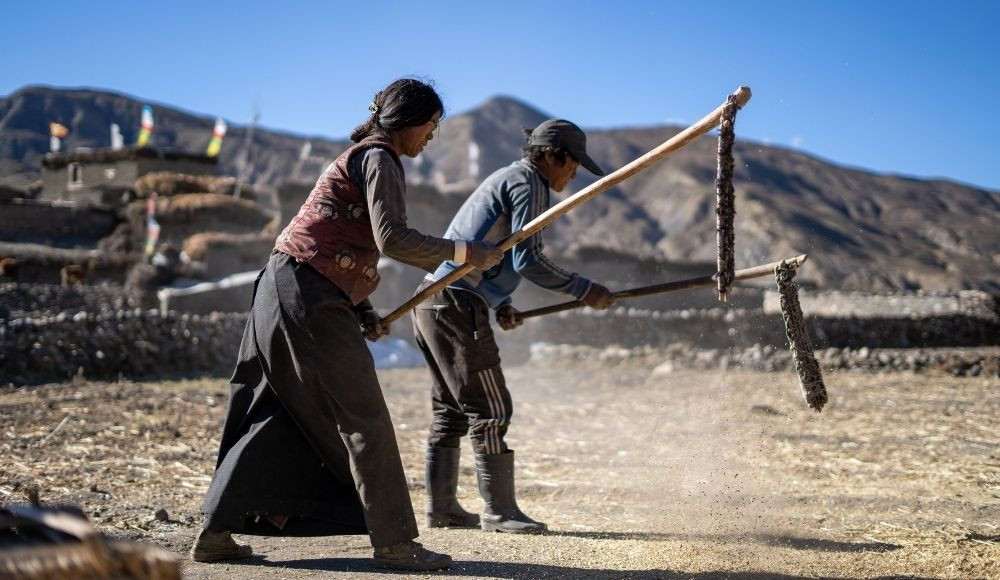
The Dolpo region, located in the remote western part of Nepal, is known for its untouched beauty, ancient Buddhist culture, and striking landscapes, including the Shey Phoksundo National Park. The region is divided into two parts: Lower Dolpo and Upper Dolpo. The Upper Dolpo Trek explores the remote and restricted area of Upper Dolpo, offering a truly off-the-beaten-path experience.
The Upper Dolpo Trek takes trekkers through the remote and rugged landscapes of the Dolpo region, offering an insight into the preserved Tibetan Buddhist culture, ancient monasteries, and breathtaking mountain vistas.
Duration: 24-28 days
Route: The trek starts in Juphal, which can be reached by a short flight from Nepalgunj. From Juphal, the trail passes through the villages of Dunai, Ankhe, and Sulighat before reaching the picturesque Phoksundo Lake in the Shey Phoksundo National Park. After exploring the lake area, the trek continues through Saldang, Shey Gompa, and several high mountain passes, including the Sela La (5,094 meters), Jyanta La (5,220 meters), and Numa La (5,190 meters). The trail then descends through Dho Tarap, Tarakot, and Dunai before returning to Juphal.
Highlights:
Experience the remote and rugged beauty of the Dolpo region, with its untouched landscapes and preserved Tibetan Buddhist culture.
Visit ancient monasteries, such as Shey Gompa, which is over 800 years old.
Witness the stunning turquoise Phoksundo Lake, one of the highest freshwater lakes in Nepal.
Cross several high mountain passes, offering breathtaking views of the Dhaulagiri, Kanjiroba, and other massifs.
Explore the diverse flora and fauna of the Shey Phoksundo National Park, home to the elusive snow leopard and blue sheep.
Best Time to Trek:
The best time to trek in Upper Dolpo is during the spring (March-May) and autumn (September-November) seasons, offering stable weather and clear skies for mountain views. The Dolpo region is located in the rain shadow of the Dhaulagiri massif, making it a suitable destination for trekking even during the monsoon season (June-August). Winter (December-February) trekking is possible but can be challenging due to cold temperatures and snow.
Permits and Regulations:
Trekkers are required to obtain the following permits for the Upper Dolpo Trek:
Restricted Area Permit (RAP): This permit is necessary for trekking in the restricted area of Upper Dolpo. The permit cost is USD 500 per person for the first 10 days and an additional USD 50 per person per day thereafter.
Shey Phoksundo National Park Entry Permit: This permit is required to enter the Shey Phoksundo National Park, which includes parts of the Dolpo region.
Additionally, the Upper Dolpo Trek requires a minimum of two trekkers and a registered guide due to its restricted area status.
In summary, the Upper Dolpo Trek offers a unique and remote trekking experience in the pristine Dolpo region, with its well-preserved culture, rugged landscapes, and breathtaking mountain views.
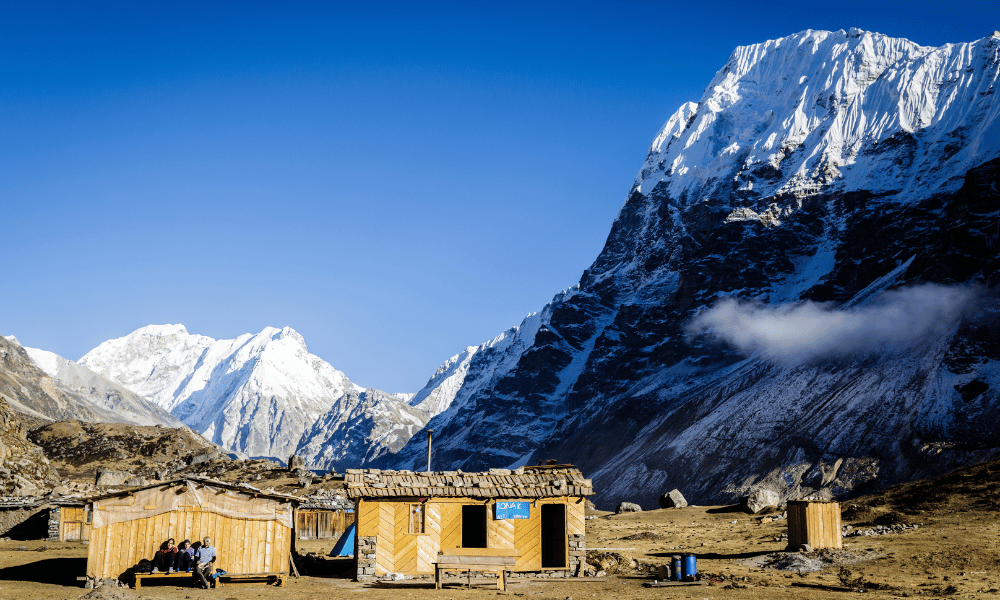
The Kanchenjunga region, located in the far eastern part of Nepal, is named after the third-highest in the world, Mount Kanchenjunga (8,586 meters). The region is known for its remote and unspoiled landscapes, diverse flora and fauna, and rich cultural experiences. The Kanchenjunga Base Camp Trek is the most popular trek in the region, offering an adventurous journey to the base camps of the mighty Kanchenjunga.
The Kanchenjunga Base Camp Trek takes trekkers through the remote and unspoiled landscapes of the Kanchenjunga region, offering a glimpse into the rich culture of local ethnic groups, diverse flora and fauna, and breathtaking mountain vistas.
Duration: 20-25 days
Route: The trek starts in Suketar (Taplejung), which can be reached by a short flight from Kathmandu or a long drive from Bhadrapur. From Suketar, the trail passes through the villages of Mitlung, Chirwa, Sekathum, and Ghunsa before reaching the Kanchenjunga North Base Camp (Pangpema) at an altitude of 5,143 meters. After exploring the base camp area and enjoying the stunning mountain views, the trek continues through the villages of Lhonak, Ghunsa, and Ramche before reaching the Kanchenjunga South Base Camp (Oktang) at an altitude of 4,785 meters. The return journey follows a similar route through Ramche, Torongten, Yamphudin, and Khebang before ending in Suketar.
Highlights:
Explore the remote and unspoiled landscapes of the Kanchenjunga region.
Experience the rich cultural heritage of local ethnic groups, including the Limbu, Rai, and Sherpa people.
Visit both the Kanchenjunga North and South Base Camps, offering breathtaking views of Kanchenjunga, Jannu, and other surrounding peaks.
Witness the diverse flora and fauna of the Kanchenjunga Conservation Area, including rhododendron forests, blue sheep, and the elusive snow leopard.
Enjoy a challenging and off-the-beaten-path trekking experience with fewer crowds than the more popular Annapurna and Everest regions.
Best Time to Trek:
The best time to trek in the Kanchenjunga region is during the spring (March-May) and autumn (September-November) seasons, offering stable weather and clear skies for mountain views. The trek can also be done during the winter (December-February), but expect colder temperatures and potential snowfall. The monsoon season (June-August) is generally not recommended due to heavy rainfall and potential landslides.
Permits and Regulations:
Trekkers are required to obtain the following permits for the Kanchenjunga Base Camp Trek:
Restricted Area Permit (RAP): This permit is necessary for trekking in the restricted area of the Kanchenjunga region. The permit cost varies depending on the duration of the trek and the season.
Kanchenjunga Conservation Area Permit (KCAP): This permit is required to enter the Kanchenjunga Conservation Area.
Additionally, the Kanchenjunga Base Camp Trek requires a minimum of two trekkers and a registered guide due to its restricted area status.
In summary, the Kanchenjunga Base Camp Trek offers a remote and challenging trekking experience through the pristine Kanchenjunga region, with rich cultural experiences, diverse flora and fauna, and breathtaking mountain views.
Altitude sickness, also known as Acute Mountain Sickness (AMS), is a common health issue that can affect trekkers and mountaineers as they ascend to higher altitudes, generally above 2,500 meters (8,202 feet). The primary cause of altitude sickness is reduced air pressure and lower oxygen levels at higher altitudes. The body needs time to acclimatize to these changes, and if it does not get enough time to adjust, it may lead to altitude sickness. AMS can range from mild symptoms to more severe conditions like High Altitude Cerebral Edema (HACE) and High Altitude Pulmonary Edema (HAPE).
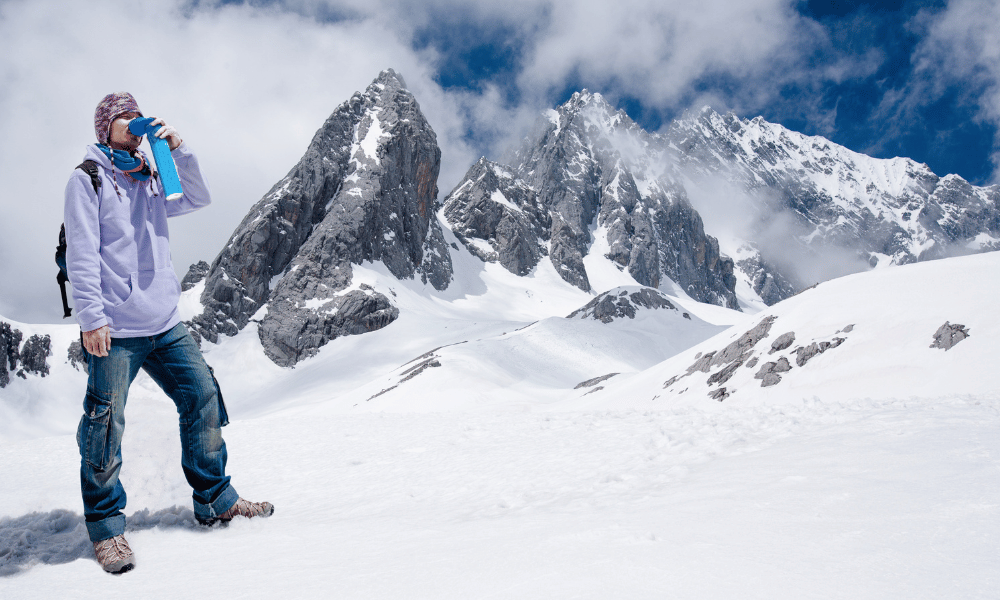
AMS is the mildest and most common form of altitude sickness. Symptoms typically appear within 6-24 hours of reaching a higher altitude and may include:
Headache
Nausea and vomiting
Dizziness
Fatigue
Loss of appetite
Insomnia
Shortness of breath
Mild AMS can be treated by resting, staying hydrated, and using over-the-counter pain relievers for headaches. If symptoms worsen or do not improve, descending to a lower altitude is necessary.
HACE is a severe form of altitude sickness and occurs when the brain swells due to the lack of oxygen at high altitudes. HACE is a life-threatening condition that requires immediate action. Symptoms may include:
Severe headache that does not respond to pain relievers
Loss of coordination (ataxia)
Confusion or disorientation
Hallucinations
Changes in consciousness, such as drowsiness or coma
If HACE is suspected, the affected person must descend to a lower altitude immediately, usually at least 500-1,000 meters (1,640-3,280 feet), or until symptoms improve. Medical treatment, including the administration of oxygen and medications like dexamethasone, may be necessary.
HAPE is another severe form of altitude sickness, characterized by fluid accumulation in the lungs. Like HACE, HAPE is a life-threatening condition that requires immediate action. Symptoms may include:
Difficulty breathing, even at rest
Persistent cough, often with frothy or bloody sputum
Rapid heart rate
Chest tightness or pain
Cyanosis (bluish discoloration of the skin)
If HAPE is suspected, the affected person must descend to a lower altitude immediately, usually at least 500-1,000 meters (1,640-3,280 feet) or until symptoms improve. Medical treatment, including the administration of oxygen and medications like nifedipine, may be necessary.
Prevention of altitude sickness involves proper acclimatization, including ascending gradually, allowing for rest days, staying hydrated, avoiding alcohol and tobacco, and being aware of the signs and symptoms of altitude sickness. In some cases, medications like acetazolamide (Diamox) may be prescribed to help prevent or reduce the severity of AMS. It is crucial to be aware of the risks and symptoms associated with altitude sickness and to take appropriate action if symptoms arise.
While trekking in Nepal or any other developing country, it's crucial to be aware of food and water safety to avoid gastrointestinal issues and other health problems. Contaminated food and water can lead to illnesses such as traveler's diarrhea, typhoid, and hepatitis A. Here are some tips to ensure food and water safety during your trek:
Water safety:
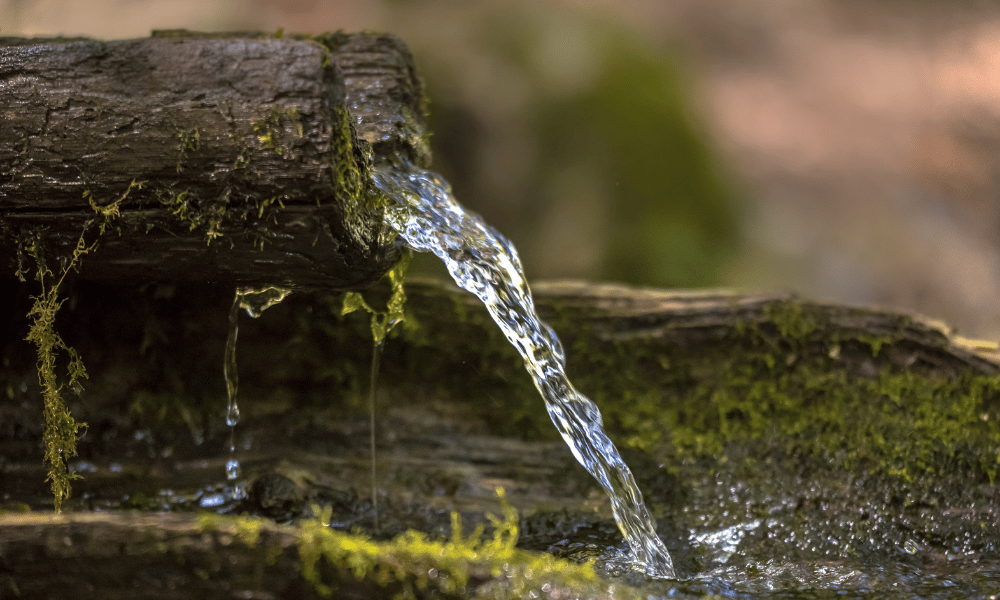
Always drink treated or purified water. You can use water purification tablets, a water filter, or a UV water purifier to treat water from local sources. Alternatively, you can purchase bottled water, but make sure the seal is intact.
Avoid drinking tap water or water from streams, as it may be contaminated with bacteria or parasites.
Use purified water for brushing your teeth and avoid swallowing water while showering or bathing.
Food safety:
Choose freshly cooked, hot meals over cold or raw foods. Hot, cooked food is less likely to be contaminated.
Avoid street food, as the preparation and storage conditions may not be hygienic.
Be cautious with raw fruits and vegetables. If you want to consume them, choose items that can be peeled, like bananas or oranges, and wash them with purified water before eating.
Avoid undercooked or raw meat, fish, and eggs, as they can be contaminated with harmful bacteria.
Stick to reputable restaurants or teahouses, where food is prepared and served in hygienic conditions.
General tips:
Always wash your hands with soap and water or use hand sanitizer before eating or preparing food.
Avoid ice in drinks, as it may be made from contaminated water.
Be cautious with dairy products, especially if they are unpasteurized, as they can be a source of bacterial contamination.
Stay away from buffet-style meals, as the food may not be kept at the proper temperature and can become contaminated over time.
By following these food and water safety guidelines, you can significantly reduce the risk of gastrointestinal issues and other illnesses during your trek in Nepal. Staying healthy will allow you to enjoy your trekking experience to the fullest.
In case of emergencies, while trekking in Nepal, it is crucial to be familiar with the available emergency services and evacuation procedures. Timely action can make a significant difference in the outcome of an emergency situation. Here are some key aspects of emergency services and evacuation in Nepal:
Emergency Contacts:
Keep a list of emergency contacts, including your trekking agency, local authorities, and embassy or consulate, if applicable.
In case of an emergency, the primary emergency number in Nepal is 112. However, the response may be limited in remote areas.
For trekking or mountain-related emergencies, the Himalayan Rescue Association (HRA) is a valuable resource. They operate aid posts in popular trekking regions and can provide medical assistance or evacuation advice.
Emergency Evacuation:
Helicopter evacuation is the most common and efficient method for evacuating trekkers or mountaineers in critical medical situations, especially from remote or high-altitude areas.
If you are trekking with a registered agency, they should have protocols in place for emergency evacuation and will assist with the arrangements.
Independent trekkers should be aware of the potential challenges in organizing an emergency evacuation and consider registering with a local agency for added support.
In non-critical situations, trekkers may need to descend on foot or with the help of porters, yaks, or horses to a lower altitude or the nearest health post.
Travel Insurance:
It is essential to have comprehensive travel insurance that covers emergency evacuation, medical treatment, and repatriation in case of an accident or illness.
Ensure that your travel insurance policy covers trekking at high altitudes and any other specific activities you plan to engage in, such as mountaineering or climbing.
Keep a copy of your travel insurance policy and emergency contact numbers with you at all times.
Communication:
Mobile phone coverage is limited in remote trekking areas, and you may not have access to a reliable network. Consider renting or purchasing a satellite phone for emergencies.
Two-way radios can be useful for communication between trekking group members, especially in areas with poor or no mobile coverage.
First Aid and Medical Supplies:
Carry a well-stocked personal first aid kit with essential medications, bandages, and other medical supplies.
Know basic first aid procedures and be prepared to manage minor injuries or illnesses until professional help is available.
Being prepared for emergencies while trekking in Nepal involves having comprehensive travel insurance, being familiar with emergency contacts and evacuation procedures, and carrying necessary communication devices and medical supplies. It is crucial to prioritize safety and be prepared to act promptly if an emergency arises.
Respecting local customs and traditions is an essential aspect of responsible tourism and ensures a positive experience for both travelers and local communities. Nepal is a diverse country with a rich cultural heritage, and understanding and respecting local customs will help you connect with the people and make your trek more enjoyable. Here are some tips for respecting local customs and traditions while trekking in Nepal:

Dress modestly: Dressing conservatively is a sign of respect in Nepal. Avoid revealing or tight clothing, and opt for loose, modest attire. Cover your shoulders and knees, especially when visiting religious sites or local villages.
Remove your shoes: Take off your shoes before entering a temple, monastery, or someone's home, as it is considered disrespectful to wear shoes indoors.
Respect religious sites and practices: Do not touch religious statues or other sacred objects, and follow local customs when visiting temples or monasteries. Always walk clockwise around stupas, mani walls, and other sacred structures. Seek permission before taking photographs, especially inside religious sites.
Greetings and body language: The traditional Nepali greeting is to say "Namaste" with your palms together in a prayer-like gesture. Avoid touching someone's head or passing anything over it, as the head is considered sacred. Also, avoid using your left hand for eating, passing objects, or shaking hands, as it is considered unclean.
Seek permission before taking photographs: Always ask for permission before taking photographs of people, especially in rural areas or at religious sites. Some locals may not want to be photographed, and it is essential to respect their wishes.
Be mindful of local eating habits: Nepali people typically eat with their hands, so try to adopt this custom when sharing a meal with locals. Also, avoid touching communal food with used utensils, and never eat from someone else's plate.
Support local communities: Whenever possible, support local businesses by purchasing souvenirs, food, and services from them. This not only benefits the local economy but also fosters cultural exchange and understanding.
Be environmentally responsible: Respect the environment by minimizing waste, properly disposing of trash, and avoiding the use of plastic bottles or single-use items. Follow the "leave no trace" principle and keep the natural environment as pristine as possible.
Learn some local language: Familiarize yourself with basic Nepali phrases and greetings. Locals appreciate it when travelers make an effort to speak their language, and it can lead to more meaningful interactions.
Be flexible and patient: Nepal operates at a different pace and cultural norms compared to Western countries. Be open to experiencing new customs and traditions, and remember that patience and flexibility are key to a positive trekking experience.
By being mindful of local customs and traditions and respecting the local culture, you will contribute to responsible tourism and create a more enriching and memorable experience for yourself and the communities you visit.
Environmental protection and responsible trekking practices are essential for preserving the natural beauty of Nepal and supporting local communities. As a responsible trekker, you can contribute to sustainable tourism and minimize your impact on the environment. Here are some tips for responsible trekking:
Waste management:
Carry reusable bags, containers, and utensils to minimize single-use plastic waste.
Dispose of trash properly. Do not litter and carry your waste back with you if there are no waste disposal facilities available.
Use biodegradable soap and cleaning products to minimize the impact on local water sources.
Use the designated toilet facilities or dig a small hole at least 200 feet away from water sources if there are no toilets available.
Minimizing water and energy consumption:
Use water sparingly when washing, bathing, or brushing your teeth, and avoid wasting water.
Use a reusable water bottle and purify water from local sources instead of buying bottled water, which contributes to plastic waste.
Turn off lights and unplug electronic devices when not in use to conserve energy.
Opt for solar chargers or power banks to charge your devices, as electricity is a scarce resource in remote areas.
Supporting local communities:
Stay in locally-owned teahouses and lodges, and eat in local restaurants to contribute to the local economy.
Hire local guides and porters to support their livelihoods and benefit from their knowledge of the area.
Purchase handicrafts and other souvenirs from local artisans, as this directly supports their craft and provides a source of income.
Learn about local customs, traditions, and the environment, and share this knowledge with fellow trekkers to promote responsible trekking practices.
Respect the rights and privacy of local people by seeking permission before taking photographs or entering their homes.
By following these responsible trekking practices, you can contribute to the preservation of Nepal's natural beauty and support local communities. As a responsible trekker, you will leave a positive impact on the environment and help ensure that future generations can enjoy the wonders of Nepal's trekking regions.
Nepal offers a wide range of post-trek activities and attractions that you can explore once you've completed your trek. These activities will allow you to experience the diverse culture, history, and natural beauty of the country. Here are some post-trek activities and attractions to consider in Nepal:
Sightseeing in Kathmandu Valley:
Visit UNESCO World Heritage Sites such as Pashupatinath Temple, Boudhanath Stupa, Swayambhunath Stupa, and the ancient cities of Bhaktapur and Patan.
Explore the bustling markets, shops, and restaurants in Thamel, a popular tourist area in Kathmandu.
Chitwan National Park:
Experience Nepal's wildlife and nature by visiting Chitwan National Park, a UNESCO World Heritage Site.
Participate in jungle safaris, bird watching, canoeing, and elephant encounters.
Learn about the indigenous Tharu culture by visiting local villages and attending cultural programs.
Pokhara:
Relax by the beautiful Phewa Lake and enjoy boating, kayaking, or stand-up paddleboarding.
Visit popular attractions like the World Peace Pagoda, Devi's Fall, and the International Mountain Museum.
Go paragliding or ultra-light flying to enjoy the stunning views of the Annapurna range and Pokhara Valley.
Explore the local Tibetan settlements and learn about their culture.
Lumbini:
Visit the birthplace of Lord Buddha, a UNESCO World Heritage Site, and explore the sacred garden, Mayadevi Temple, and Ashoka Pillar.
Discover various international monasteries built by different countries in the Lumbini area, showcasing unique architectural styles.
Adventure sports:
Try bungee jumping or canyon swinging at the Last Resort near the Nepal-Tibet border.
Experience white-water rafting or kayaking on the Trishuli, Bhote Koshi, or other scenic rivers in Nepal.
Go mountain biking in the Kathmandu Valley or other off-the-beaten-path destinations.
Cultural experiences:
Participate in a Nepali cooking class to learn how to prepare traditional dishes like momos or dal bhat.
Attend a traditional Nepali music or dance performance to gain insights into the country's rich cultural heritage.
Take a yoga or meditation retreat to unwind and rejuvenate after your trek.
These post-trek activities and attractions will provide you with an opportunity to experience Nepal's unique culture, history, and natural beauty beyond the popular trekking routes. By exploring these attractions, you can create lasting memories and enrich your overall experience in Nepal.
Trekking in Nepal offers numerous benefits that can positively impact your physical, mental, and emotional well-being. The diverse landscapes, rich culture, and warm hospitality of the country make for a truly memorable experience. Here are some of the key benefits of trekking in Nepal:
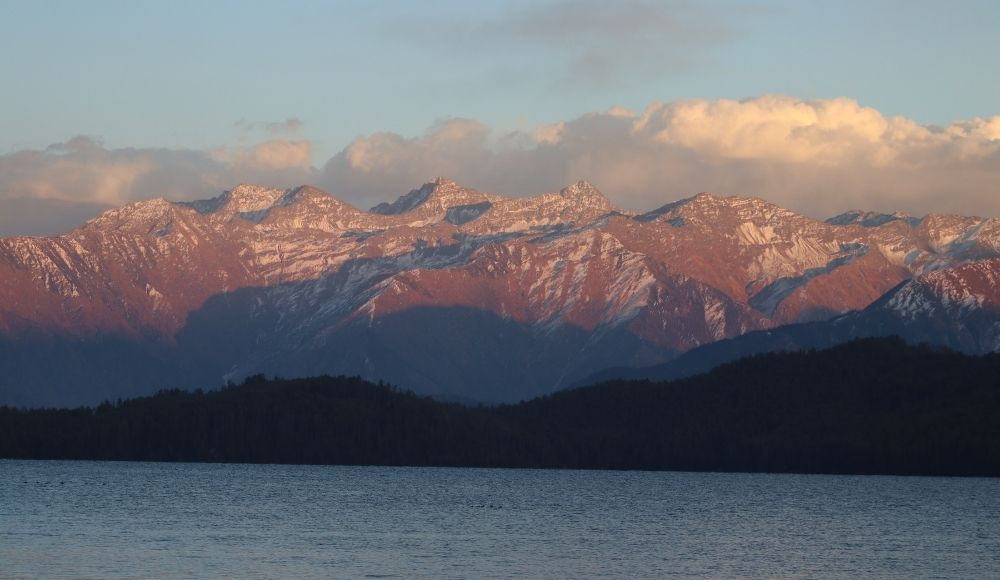
Physical fitness: Trekking is an excellent form of exercise that helps improve cardiovascular endurance, muscular strength, and overall physical fitness. The varying terrain and altitudes in Nepal's trekking routes provide a challenging workout, making your body stronger and more resilient.
Mental health: Trekking in nature has been shown to reduce stress, anxiety, and depression. The serenity of the mountains, lush forests, and pristine rivers offers a calming environment that promotes mental well-being and relaxation.
Personal growth: Trekking in Nepal pushes you to step outside of your comfort zone and face new challenges. Overcoming obstacles and adapting to unfamiliar situations fosters personal growth, resilience, and self-confidence.
Cultural exchange: Nepal is a culturally diverse country with a rich heritage. Trekking allows you to interact with local people, learn about their customs and traditions, and gain unique insights into their way of life. This cultural exchange can broaden your perspectives and foster understanding and tolerance.
Connection with nature: Trekking in Nepal's stunning landscapes provides an opportunity to reconnect with nature and appreciate the beauty and serenity of the natural world. This connection can foster a deeper appreciation for the environment and promote a sense of responsibility for its preservation.
Spiritual growth: Many trekking routes in Nepal have spiritual significance and are home to ancient monasteries, temples, and sacred sites. Visiting these places can provide a sense of inner peace, reflection, and spiritual growth.
Sense of accomplishment: Reaching your destination, whether it's a base camp, high pass, or a remote village, provides a strong sense of accomplishment and satisfaction. This achievement can boost your self-esteem and provide lasting memories.
Social connections: Trekking with a group or joining other trekkers on the trail provides an opportunity to form friendships and create lasting bonds. Sharing experiences, challenges, and triumphs can strengthen social connections and contribute to a sense of belonging.
Economic impact: Trekking in Nepal contributes to the local economy by supporting local businesses, such as lodges, teahouses, and guiding services. This helps create jobs and improve living standards for people in remote areas.
Discovering new places: Nepal offers diverse trekking routes, each with its unique landscapes, flora, fauna, and cultural experiences. Trekking allows you to explore these hidden gems and create unforgettable memories.
Trekking in Nepal offers numerous physical, mental, emotional, and social benefits. It allows you to connect with nature, immerse yourself in a different culture, challenge yourself, and create lasting memories while positively impacting the local economy.
Responsible and sustainable trekking practices are essential to preserve the natural beauty and cultural heritage of trekking destinations while minimizing the negative impact on the environment and local communities. By adopting responsible trekking practices, you can contribute to the long-term sustainability of the places you visit and ensure that future generations can enjoy these magnificent landscapes. Here are some words of encouragement to promote responsible and sustainable trekking practices:
As a trekker, you have the power to make a difference in the places you visit. Your choices, actions, and attitudes can significantly impact the environment and the people you encounter during your journey. By embracing responsible and sustainable trekking practices, you not only show respect for the natural world and local cultures but also contribute to the preservation and conservation of these precious resources for future generations.
Remember that you are a guest in the areas you visit, and it's essential to be mindful of the local customs, traditions, and environment. Always strive to leave a positive impact on the communities you pass through and the landscapes you traverse. By being a responsible trekker, you become an ambassador for sustainable tourism, inspiring others to follow in your footsteps and promoting a more thoughtful approach to exploring the world.
Think of the privilege you have in experiencing the breathtaking beauty of nature and the warmth of diverse cultures. This privilege comes with a responsibility to protect and preserve the places you visit. As you embark on your trekking adventure, remember that your actions matter, and you have the opportunity to make a lasting, positive impact. Embrace responsible and sustainable trekking practices and take pride in knowing that you are part of the solution to preserve the world's natural and cultural treasures for generations to come.
our first-hand Himalayan travel experience